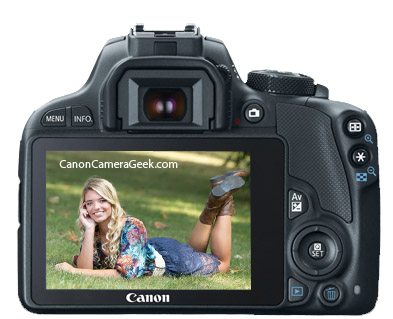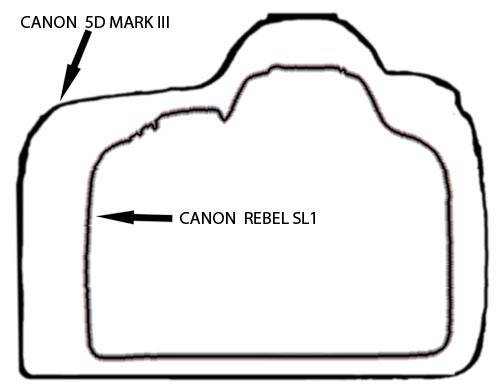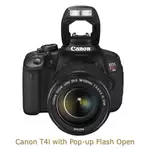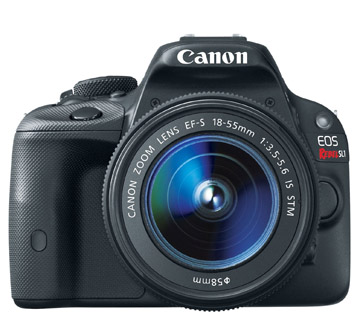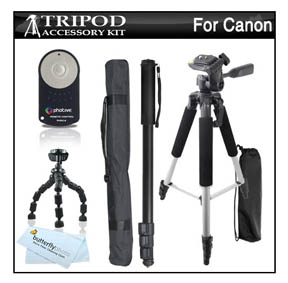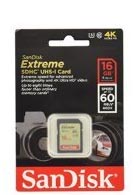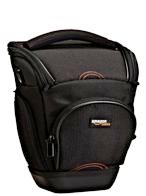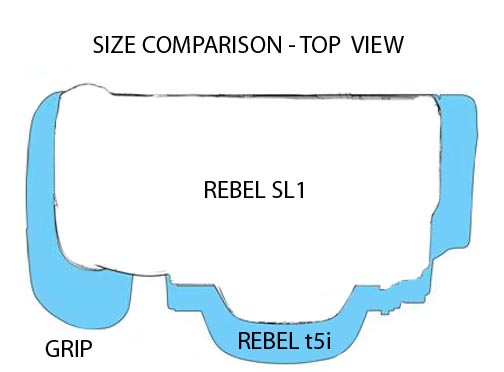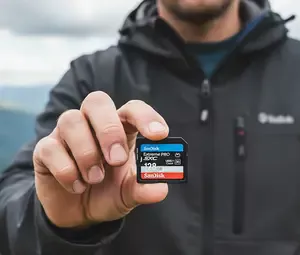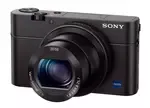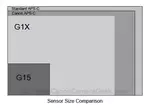Canon SL1 - is it still a good camera
The world's smallest DSLR
WRITTEN BY: BRUCE LOVELACE
UPDATED: March 9, 2024
Should you have a Canon SL1 as your own. It's a full-featured DSLR, now available with a lens and a nice bundle of accessories for an absurdly affordable price. Now that the SL2 and SL3 have been added to the market, you can get a Canon Rebel SL1 at a real bargain.
If you're looking for all the bells and whistles of a DSLR, but don't want to lug around a big, heavy DSLR type of camera, you've found an answer.
The Canon SL1 is still a good camera even though it was first released in 2013. The built-in technology is good for an entry level DSLR and it's still great for a DSLR of this size.
when did canon sl1 come out
The Canon EOS Rebel SL1, called the 100D in Europe and the EOS Kiss X7 in Japan, was first introduced by Canon in March of 2013.
At the time of its release, it was the world's smallest DSLR, weighing it at less than a pound. My friends at DPReview gave this marvel a Gold Award. That doesn't happen very often.
Now that it's been on the market for a while and the SL2 and SL3 has been announced, you can have your hands wrapped around your own Canon DLSR for a bargain.
canon rebel sl1 specs
The Canon Rebel SL1 has the specs you'd expect from a DSLR.
- An 18 megapixel sensor
- 3 Inch LCD touch screen
- Full array of manual and automatic settings
- Access to the full range of Canon EF-S lenses
- High ISO-Low light capabilities
- Fast, powerful processor
Full-sized DSLRs aren't for everyone. If you feel they're simply too big and too heavy for you to lug around, go with a compact DSLR. I purposely stayed away from the 1Dx series of Canon DSLRs for that very reason.
If you'd love to shoot great photos and have all of features, the Rebel SL1 will appeal to you. Look at the difference in size between the SL1 and my Canon 5D Mark III.
The SL1 body weights it at less than a pound. That's about the same as a pint of milk The 5D Mark III weighs almost exactly twice as much at just under 2 pounds.
This camera can be used by amateurs who like fully automatic settings or can have fun with the SL1 creative auto mode. Professionals could easily carry this as a nice compact back-up to their full-sized camera body.
"It's a modern miracle of engineering to fit all that electronic, mechanical and optical bling into a small space." - Canon shooter Bruce Lovelace on the SL1
how to focus your canon rebel sl1
What has impressed the professional camera reviewers is the remarkable improvement in auto-focus. Video focusing is much better than previous cameras, employing the Hybrid AF II auto focus system.
You can tap into the full use of the SL1's brain and use the autofocus point selection or take a little more control and select your own focus point to emphasize a particular spot in your composition.
To pick an autofocus point manually on your Canon SL1, follow this 4 step process.
- Set the camera mode to P, Tv, Av, or M.
- Press and release the AF Point Selection button.
- To choose a single autofocus point, set the camera to Manual AF Point Selection mode.
- Pick the AF Point you want to use.
Why you might want to own a Rebel SL1
What are the Canon SL1 pros and cons?
There are 3 solid reasons why the Rebel SL1 appeals to many aspiring photographers like yourself and of course, the SL1 has its shortcomings to consider. The pros are size, price, and the number of features.
SIZE
When something this small works so well, it's a good fit. Cameras that are easy to carry get taken along and used. Cameras that are big and bulky get left at home.
This camera takes a full range of EF-S lenses which are smaller, lighter, and more affordable than full-sized EF lenses. The Rebel SL1 can also take your existing EF lenses, or any other brand of lens that has a Canon mount on it.
PRICE
It's a good strategy to wait for a year or two after a new camera is released to get a good price. The SL1 was released in 2013, so it's now been over 10 years since it was released. You've now reached a time when you're only going to find used Canon SL1s to buy.
At the time of this post update you can get used Canon Rebel SL1 cameras for $133.
features
This is a full featured, DSLR, with interchangeable lenses, with multiple automatic and manual settings, capable of taking spectacular photographs. It's a recent offering that's followed a long history of technology improvements that give you, the creative photographer, lots of options on how you want to create photos.
Since it's a genuine Canon DSLR, you have a huge selection of accessories available to expand on your picture taking capabilities and creativity.
Canon Rebel SL1 Shortcomings
There are several disadvantages to choosing an intro level DSLR camera like the SL1. Whether these are dealbreakers for you or not depends on the type of photos you like to shoot as well as the performance you want in your new camera.
sports
 4 frames-per-second
4 frames-per-secondIf you want to shoot sprots or other fast-paced action shots, the Rebel SL1 will disappoint you with its performance at only 4 frames-per-second burst rate. That's too slow slow, particularly if you're shooting high school level or higher sports. If you're photographing your 6 year old playing soccer or T-ball, you'll be okay.
I've taken some striking pro tennis photos using a 3 frames-per-second DSLR (the original Canon 5D), but I would have had more success with a faster camera. A lot of action shots can be missed at that frame rate.
Professional sports photographers and enthusiastic soccer moms want more. A rate of 8 or more frames-per-second will give you more chance of getting that once in a lifetime action shot or wildlife photo.
LCD screen
The LCD screen on the back of the Rebel SL1 is not an articulating screen. That's a personal peeve of mine too with the 5D Mark III. Probably not a big deal for you. The screen on the SL1 is big and bright, and it's got great resolution.
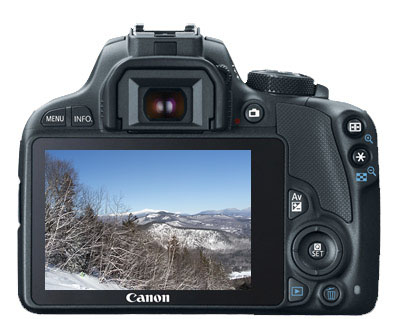 LCD Screen in fixed position.
LCD Screen in fixed position.I like to shoot with my camera up high above my head, or down low to the ground. A rotating screen is a nice feature to use occasionally for shooting your selfie too.
Canon SL1 Bundles
At the time of its release you could get a great bundles that included the camera body, the standard 18-55mm kit lens, memory card, small camera bag, and tripod. At the time of the original post on the SL1, those bundles were going for less than $500. That's a ton of camera equipment for the money.
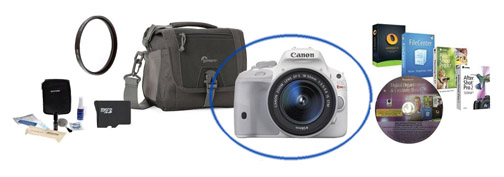 Canon SL1 Camera Bundle
Canon SL1 Camera BundleAdorama - 2019
The best thing about the Canon Rebel SL1 cameras? Well okay, three things. They take great photos, they're super cheap and they're fun to use! Shoot more Canon photos. Shoot better Canon photos.
Where to buy your Rebel SL1?
As an Amazon affiliate Canon Camera Geek receives a small commission from qualifying purchases, at NO added cost to you.
You can check for current prices with and without lenses, new and used, as well as alternatives like the SL2 and SL3 on Amazon.Rebel SL1 FAQ
Does the Canon SL1 have WIFI?
Does the Canon SL1 have WIFI?
The Rebel SL1 does not have built-in WIFI capabilities. You can use an Eye-Fi SD card as an accessory to enable this function.
How do you charge a Canon SL1 camera?
How do you charge a Canon SL1 camera?
You can charge the Canon SL1 battery in-camera by connecting the AC power adapter to the SL1 or you can use a USB port that allows you to charge the battery directly in the camera. Additionally, you remove and charge the lithium ion battery in the charger that comes with the SL! or you can use a cheaper compatible alternative charger.
How long does Canon SL1 battery last?
How long does Canon SL1 battery last?
A new Canon SL1 camera battery is rated to last for 380 photos with the optical viewfinder or 150 with the live view LCD screen
I hope this post was helpful. For related posts check out the links below my signature


Bruce Lovelace is the publisher of Canon Camera Geek. Read more about him on the About Page. He also publishes how to articles and camera gear reviews at the Photography Tips website.
View some of Bruce's photos on Instagram and Flickr. Join the tribe of followers on YouTube. Bruce also runs photo workshops and provides 1 on 1 digital photography coaching.
Recent Articles
-
Choose the Right Memory Card for Your Canon R6 Mark II: Speed And Size
Nov 05, 25 02:04 PM
R6 Mark II Memory Card -
Canon G1x Mark II vs G1X-Side By Side Comparison of Canon G1X Cameras
Oct 22, 25 08:35 AM
G1 X Mark II vs. G1 X: Is the New Version a HUGE Leap... Or a Massive Mistake? Canon responded to the criticisms of the original G1X. Canon G1X Mark II vs G1X -
Sony RX100 III vs G1x Mark II by Canon. Side by Side Comparison
Oct 22, 25 08:07 AM
It's another one of those epic camera battles, this time not the Canon vs Nikon but rather the RX100 III Vs G1X Mark II battle. -
Canon R6 Mark II FAQ. Answers To All of Your Canon R6 M2 Questions
Sep 01, 25 07:51 AM
There's a lot you can easily learn about Canon's mirrorless R6 Mark II camera. Get your questions answered in this R6 Mark II FAQ -
Canon G1X Sensor Size. What Are The Specs on The Canon G1X Sensor
Aug 26, 25 11:39 AM
Here is a comparison of the Canon G1X sensor size with the rest of the "G" series Canon cameras -
Macro Photography With the Canon G1X Mark II- G1X Close-up Flowers
Aug 26, 25 11:24 AM
Use these helpful tips for your macro photography with the Canon G1X Mark II and its re-designed lens. Here are the sample close up photos of flowers
